An implementation engineer has been asked to perform QA for a standard file ingestion, done by the client.
The source file that was ingested can be seen below:

The number of rows added to this data stream is 3. What could have led to this discrepancy?
An Implementation engineer is requested to create a new harmonization field 'Offer’ and apply the following logic:
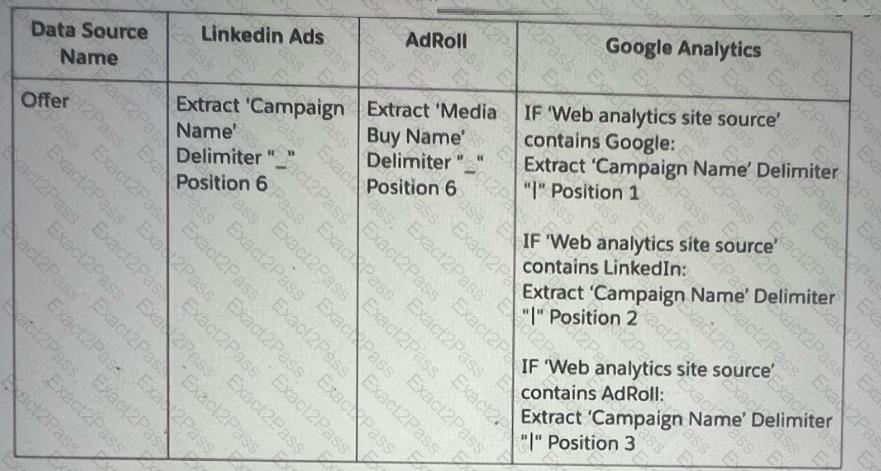
The implementation engineer to use the Harmonization Center. Which of the below actions can help implement the new dimension ‘Offer?
An implementation engineer is requested to create the harmonization field - Magician
This field should come from multiple Twitter Ads data streams, and should follow the below logic:
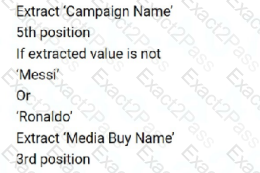
Using the Harmonization Center, the engineer created a single Pattern for Campaign Name. What other action should the engineer take to meet the requirements?
Your client would like to create a new harmonization field - Exam Topic.
The below table represents the harmonization logic from each source.
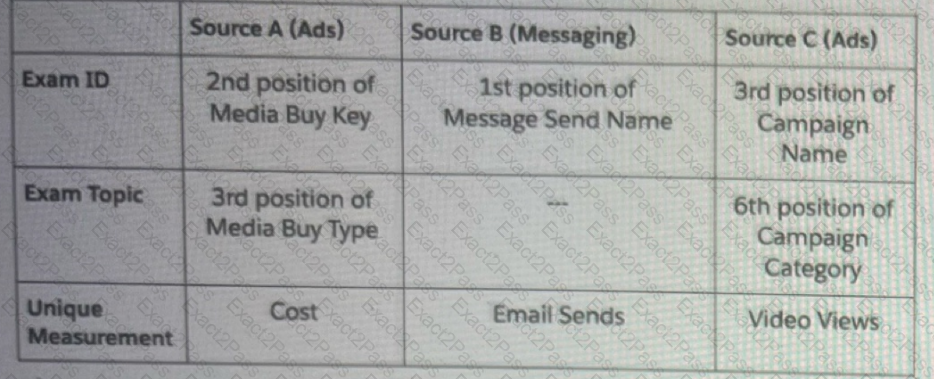
As can be seen from the table there are in fact two fields that hold a certain connection: Exam ID and Exam Topic. The connection indicates that where an Exam ID is found -a single Exam Topic value is associated with it.
The Client has a requirement to be able to view measurements from all data sources sliced by Exam Topic values as seen in the following example:

Which harmonization feature should an Implementation engineer use to meet the client's requirement?
The following file was uploaded into Marketing Cloud Intelligence as a Generic Data Stream type:

The mapping is as follows:
Day — Day
web_site_key —> Main Generic Entity Key
web_site_name —> Main Generic Entity Name
Web_site_source —> Main Generic Entity Attribute 01
Page Views — Generic Metric 1
How many rows will be stored in Marketing Cloud Intelligence after the above file is ingested?
An implementation engineer is requested to integrate the following files:
File A:

File B:

The client would like to link the two files in order to view the two KPIS (Tasks Completed’ and ‘tasks Assignmed’) alongside’Employee Name’ and/or ‘Squard’.
A Parent-Child configuration was set between the two.
Which two statements are correct?
Your client is interested in ingesting the below file:

The client decided to upload the file to a new generic data stream type and map ‘Date’ to ‘Day’ and ‘Number of Topics’ to a generic custom metric.
In regards to the fields ‘Meeting Code’ and ‘Meeting Name’, your client is debating several options.
Which two options would you recommend in order to avoid data loss?
A technical architect is provided with the logic and Opportunity file shown below:
The opportunity status logic is as follows:
For the opportunity stages “Interest”, “Confirmed Interest” and “Registered”, the status should be “Open”.
For the opportunity stage “Closed”, the opportunity status should be closed.
Otherwise, return null for the opportunity status.
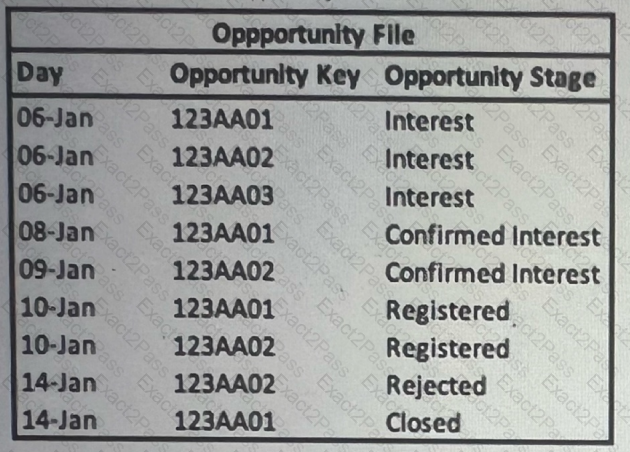
Given the above file and logic and assuming that the file is mapped in a GENERIC data stream type with the following mapping:
“Day” — Standard “Day” field
“Opportunity Key” > Main Generic Entity Key
“Opportunity Stage” — Generic Entity key 2
A pivot table was created to present the count of opportunities in each stage. The pivot table is filtered on Jan 7th -11th.Which option reflects the stage(s) the opportunity key 123AA01 is associated with?
Which Marketing Cloud Intelligence field is considered an attribute and not a “variable”?
Your client has provided sample files of their data from the following data sources:
Google Campaign Manager

Below are the requirements from the client and additional information:
* The sources are linked to each other by shared Media Buy names.
* In addition to the mutual Media Buys, the sources contain campaign and site values. However, the client would like to see the campaign/site values coming from Google CM and not from Google DV360.
* The source of truth for cost is Google DV360
Which action(s) are needed to take place in order to meet the client’s requirement and set Google DV360 as the source of truth for Cost?
A client’s data consists of three data streams as follows:
Data Stream A:
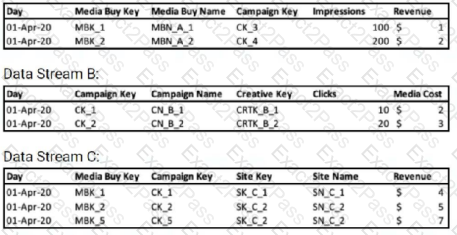
* The data streams should be linked together through a parent-child relationship.
* Out of the three data streams, Data Stream C is considered the source of truth for both the dimensions and measurements.
Assuming the data was ingested properly and the Parent Child was created correctly according to the client's requirements, what is the total
Impressions value for Campaign Key ‘CK_3’?
Which three statements accurately describe the different data stream types in Marketing Cloud intelligence?
A technical architect is provided with the logic and Opportunity file shown below:
The opportunity status logic is as follows:
For the opportunity stages “Interest”, “Confirmed Interest” and “Registered”, the status should be “Open”.
For the opportunity stage “Closed”, the opportunity status should be closed
Otherwise, return null for the opportunity status
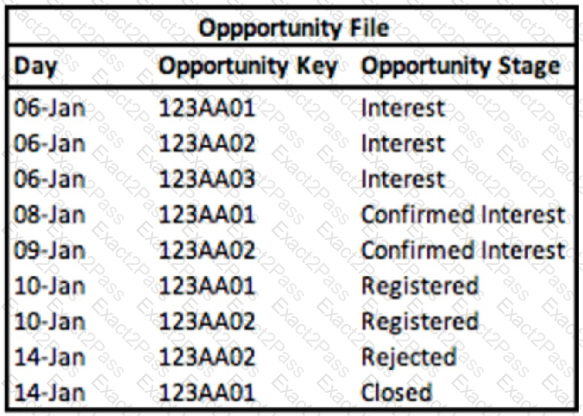
Given the above file and logic and assuming that the file is mapped in a GENERIC data stream type with the following mapping:
“Day” — Standard “Day” field
“Opportunity Key” > Main Generic Entity Key
“Opportunity Stage” — Main Generic Entity Attribute
“Opportunity Count” — Generic Custom Metric
A pivot table was created to present the count of opportunities in each stage. The pivot table is filtered on Jan 11th. What is the number of opportunities in the Interest stage?